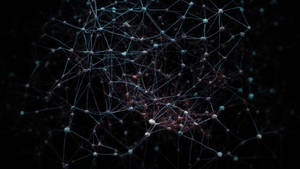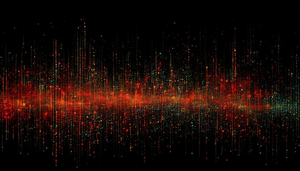Clustering: Hierarchical Clustering

Hierarchical clustering is a popular unsupervised machine learning technique used to group similar data points into clusters. It builds a tree-like hierarchical structure of clusters, where each data point is initially considered as an individual cluster. These individual clusters are then successively merged based on their similarity until all data points belong to a single cluster.
Types of Hierarchical Clustering
There are two main types of hierarchical clustering:
- Agglomerative Clustering: This approach starts with each data point as a separate cluster and combines the most similar clusters at each step.
- Divisive Clustering: This approach begins with all data points in one cluster and splits them into smaller clusters based on dissimilarity.
Steps in Hierarchical Clustering
The process of hierarchical clustering involves the following key steps:
- Calculate Similarity: Use a distance metric to calculate the distances/similarities between data points.
- Initial Clustering: Treat each data point as an individual cluster.
- Merge/Split: Successively merge (agglomerative) or split (divisive) clusters based on similarity/dissimilarity.
- Construct Dendrogram: Represent the merging/splitting process in a dendrogram for visualization.
- Cluster Identification: Determine the optimal number of clusters by cutting the dendrogram at an appropriate level.
Advantages of Hierarchical Clustering
- No need to specify the number of clusters beforehand.
- Provides valuable insights into how individual data points are grouped at different levels of granularity.
- Easy to interpret and visualize using dendrograms.
Disadvantages of Hierarchical Clustering
- Computationally intensive for large datasets due to its iterative nature.
- Difficult to apply on very large datasets due to high time complexity.
In conclusion, hierarchical clustering is a powerful technique in unsupervised machine learning that offers flexibility and interpretability in segmenting complex datasets into meaningful groups based on their similarities.
Sponsored
Sponsored
Sponsored
Explore More:

Model Evaluation and Selection
Topic model evaluation and selection are crucial steps in the process of building...

Feature Engineering
Feature engineering is the process of selecting, creating, and transforming features (inputs) in...

Natural Language Processing (NLP)
Natural Language Processing (NLP) is a subfield of artificial intelligence that focuses on...

Neural Networks and Deep Learning
Neural networks are a class of algorithms modeled after the human brain's neural...

Reinforcement Learning
Reinforcement learning is a branch of machine learning concerned with how intelligent agents...

Dimensionality Reduction: Autoencoders
Autoencoders are a type of artificial neural network used for learning efficient representations...

Dimensionality Reduction: Factor Analysis
Factor analysis is a powerful technique used in the field of machine learning...

Dimensionality Reduction: Independent Component Analysis (ICA)
Independent Component Analysis (ICA) is a dimensionality reduction technique commonly used in machine...

Dimensionality Reduction: t-Distributed Stochastic Neighbor Embedding (t-SNE)
Dimensionality reduction is a fundamental technique in machine learning and data visualization that...

Dimensionality Reduction: Principal Component Analysis (PCA)
Principal Component Analysis (PCA) is a popular dimensionality reduction technique used in machine...

Unsupervised Learning: Dimensionality Reduction
Unsupervised learning dimensionality reduction is a crucial concept in machine learning that deals...

Clustering: Gaussian Mixture Models
Clustering is a fundamental unsupervised learning technique used to identify inherent structures in...

Clustering: DBSCAN
DBSCAN (Density-Based Spatial Clustering of Applications with Noise) is a popular clustering algorithm...

Clustering: K-Means
Clustering is an unsupervised machine learning technique that aims to partition a set...

Unsupervised Learning: Clustering
Unsupervised learning clustering is a fundamental concept in machine learning that involves identifying...

Unsupervised Learning
Unsupervised learning is a type of machine learning where the model is trained...